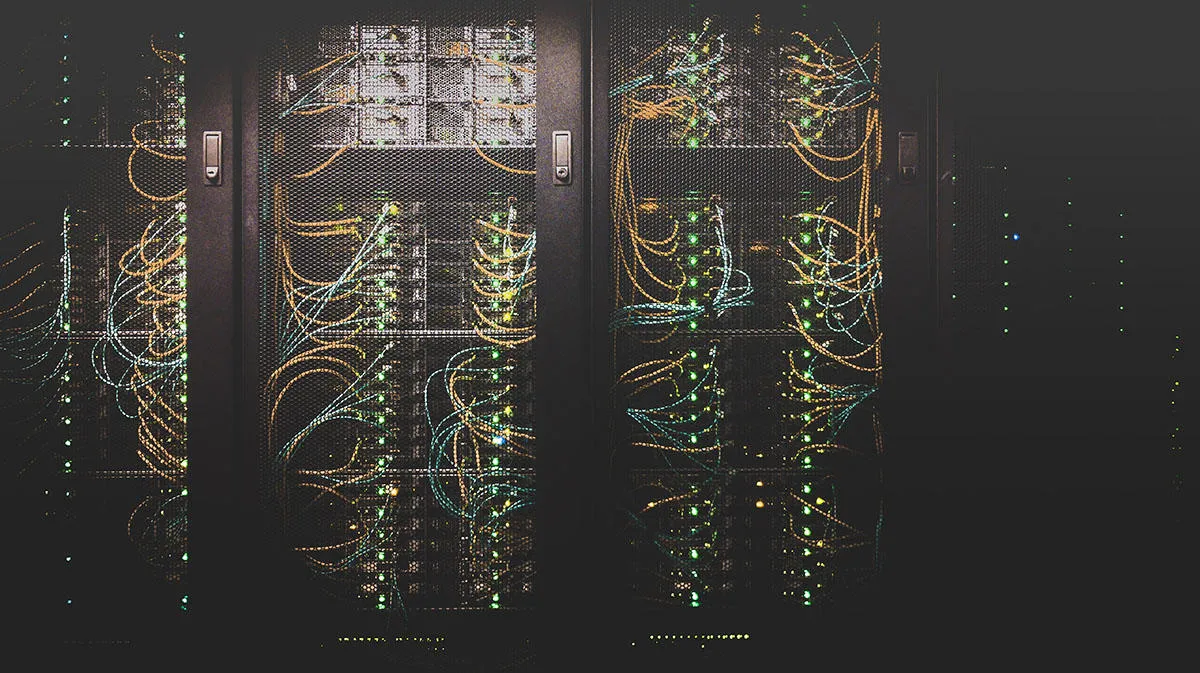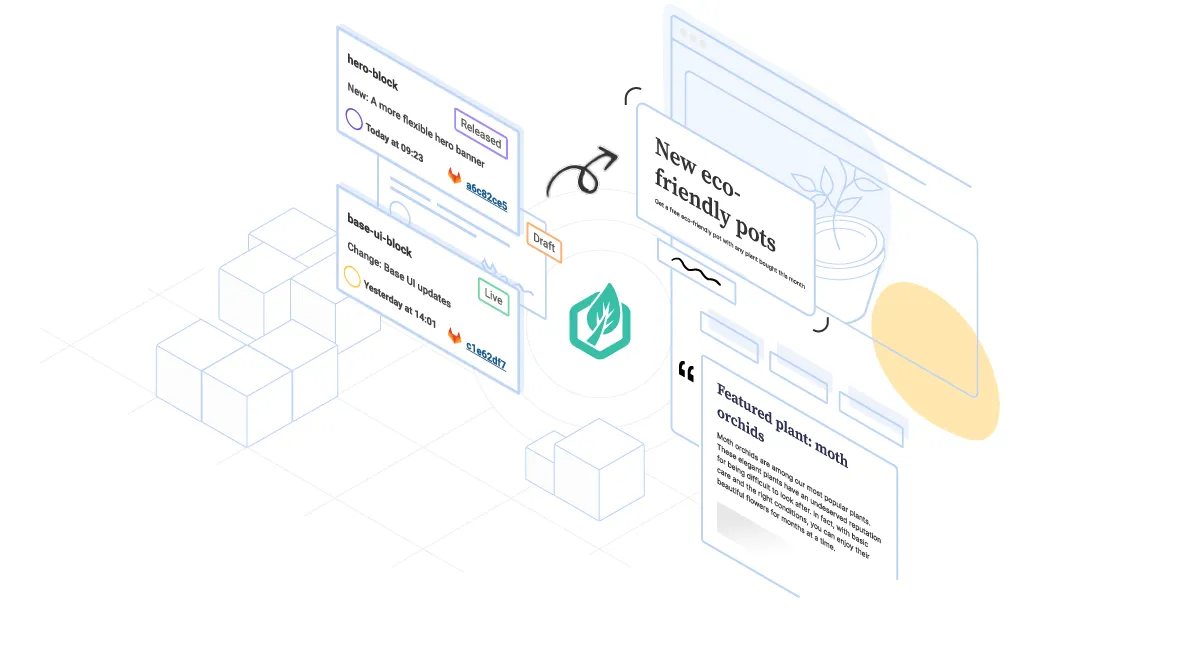What is CI/CD and how does it work?
Rolling out new features and fixing bugs rapidly is now the reality of software and apps. To keep pace, developers have adopted methodologies that streamline the process and enhance efficiency. One methodology that has become a cornerstone of modern software development practice is CI/CD. But what exactly is CI/CD, and how does it work?
TL;DR CI/CD pipeline explained
- CI/CD combines continuous integration, delivery, and deployment for reliable software updates
- It fosters collaboration, improves code quality, and reduces risks
- CI/CD enables faster delivery of new features and updates
- It is an integral part of the DevOps methodology
On this page
What is CI/CD?
CI/CD refers to the combined software development practices of continuous integration and continuous delivery, or sometimes continuous deployment. Together, these practices form a pipeline that enables developers to implement changes and updates more frequently and reliably.
Continuous integration
Continuous integration (CI) is a software development practice that uses version control tools to merge all developers' working copies to the main branch of a shared repository multiple times throughout the day. By doing so, teams can detect and address potential problems early on, preventing integration issues, creating fewer bugs and facilitating faster development cycles. This collaborative approach ensures that the codebase remains consistently up-to-date and allows for smoother collaboration among team members, ultimately leading to more efficient and streamlined development processes.
Continuous delivery
Continuous delivery (CD), on the other hand, ensures that the software can be released at any time. By automating the delivery of applications to selected infrastructure environments, CD allows for seamless and efficient deployment. It enables development and operations teams to release new features, updates, and bug fixes rapidly and reliably, ensuring a faster time to market. With CD, organisations can achieve higher productivity levels, reduce the risk of errors, and deliver value to end-users more frequently.
Continuous deployment
Continuous deployment (CD) is a step further from continuous delivery. It's a strategy that automatically deploys all changes that pass the automated testing phase to production. It eliminates the need for human intervention in the deployment process, further streamlining workflows. By implementing continuous deployment, organisations can ensure real-time updates and rapidly react to market needs, providing a competitive edge. However, it requires a robust suite of automated tests to prevent the deployment of problematic code to production. In essence, continuous deployment embodies the principle of "release early, release often". It is the ultimate goal for many organisations seeking to optimise their delivery processes.
How does CI/CD relate to DevOps?
DevOps is a set of practices that combines software development (Dev) and IT operations (Ops). It aims to shorten the system development life cycle and provide continuous delivery with high software quality. DevOps is a culture that promotes collaboration between the development team and the operations team, breaking down siloes and fostering a culture of shared responsibility. This culture, combined with robust CI/CD practices, helps deliver software rapidly, reliably, and at scale.
The comprehensive application of DevOps practices can enable organisations to innovate faster, better satisfy their customers, and compete in the market. By implementing CI/CD pipelines, teams can streamline the software release process, enabling faster and more reliable deployments. This automation ensures that each code change is integrated and tested automatically, reducing the risk of errors or bugs. Moreover, CI/CD pipelines allow continuous feedback and monitoring, facilitating continuous improvement and rapid iteration.
The alignment of CI/CD with the core objectives of DevOps makes it an integral part of the DevOps methodology. By adopting CI/CD, organisations can achieve a more efficient and collaborative software development process, improving productivity and customer satisfaction.

What are the benefits of CI/CD?
By adopting continuous integration and continuous delivery practices, you can unlock a multitude of benefits that have the potential to enhance your development process significantly.
Faster delivery of new features and bug fixes
CI/CD streamlines and automates the development process, allowing quicker and more frequent delivery of new features and bug fixes. By integrating code changes into a shared repository and automating the build, test, and deployment processes, CI/CD eliminates manual tasks and reduces the time required for development cycles. This accelerated delivery cycle ensures that new features and bug fixes are promptly available to users, enhancing software development's overall efficiency and agility.
Improved collaboration and code quality
Regularly integrating code changes through continuous integration means that team members can identify and address issues early in the development cycle, leading to enhanced code quality. Promoting frequent and seamless collaboration among developers, testers, and operations fosters a culture of shared responsibility and collective ownership of the development process. This collaborative approach improves the final product and cultivates a strong sense of teamwork and shared success within the team.
Enhanced software quality
CI/CD practices ensure that every commit triggers a build, and each build undergoes a comprehensive series of automated tests. This continuous testing process plays a crucial role in maintaining exceptional software quality by identifying and rectifying issues early in the development cycle. By catching potential problems early on, CI/CD helps deliver more reliable and robust software solutions to end-users.
Streamlined collaboration
Continuous integration and continuous delivery foster regular integration of code changes, thus bridging the gap between various stakeholders in a project, including developers, testers, and the operations team. By promoting frequent integration, CI/CD ensures better communication, minimises misunderstandings and enables more effective collaboration among team members. This iterative approach allows for quick identification and resolution of issues, improving efficiency and overall project success.

Do I need a CI/CD pipeline for my website?
Whether you require a CI/CD pipeline for your website depends heavily on the nature of your project. Automating your testing and deployment processes using CI/CD could significantly enhance your development cycle if your website receives high traffic or requires frequent updates. Automating tasks such as testing and deployment can save time and reduce the risk of errors that can occur with manual processes. It also provides continuous feedback, enhancing the website's quality and helping scale effectively.
Implementing CI/CD also involves a cultural change towards a collaborative environment where developers, testers, and operations teams work together towards a common goal – continuous delivery of high-quality features and functionality. It's worth noting that implementing a CI/CD pipeline requires time and resources to set up and maintain. Nonetheless, the long-term benefits – improved efficiency, quality, and customer satisfaction – are often well worth the initial investment.
However, your website is static with infrequent updates. Applying a CI/CD pipeline may provide a different benefit level in that case. The setup and maintenance of a CI/CD pipeline require resources and time, which may not be justified for more straightforward websites with infrequent updates. Therefore, it is essential to assess your website's specific demands and nature before deciding on implementing a CI/CD pipeline.
What do I need to create a CI/CD pipeline?
Creating a successful CI/CD pipeline requires careful planning, resources, and commitment from the team. Here are some essential steps:
Define the development processes.
Before setting up a CI/CD pipeline, it's essential to clearly define development processes — from coding standards and review processes to testing and deployment procedures. This clarity helps to inform the design and implementation of the pipeline.
Establish a version control system.
A robust version control system (VCS) is crucial for tracking and managing changes to the codebase. Git is popular due to its distributed architecture and compatibility with most CI/CD tools.
Automate testing
Comprehensive automated testing is crucial to identify issues as early as possible. This includes unit tests, integration tests, and end-to-end tests.
Select a CI/CD tool
Choose a CI/CD tool that fits the needs of your team and project. Tools such as Jenkins, CircleCI, Travis CI, or GitLab CI/CD offer a range of features, including automated builds, testing, and deployment.
Define the pipeline stages
Clearly define each pipeline stage, from integration to delivery and deployment. Each stage should be designed to validate the code from a different angle and should provide immediate feedback.
Build the infrastructure
The infrastructure to run your CI/CD pipeline can be on-premise, cloud-based, or a hybrid. Ensure that it can scale to meet the demands of your pipeline.
Monitor and improve
Continuous monitoring of the pipeline helps teams identify bottlenecks and areas for improvement. Regular reviews and updates are essential to ensure the pipeline remains efficient and effective.
Best practices in CI/CD
Adopting specific best practices to maximise the effectiveness of Continuous Integration and Continuous Deployment (CI/CD) is essential. These practices include automating build and deployment processes, implementing version control systems, performing regular code reviews, and conducting thorough testing at each stage of the development pipeline. By following these practices, organisations can ensure smooth and efficient software delivery, reducing errors and improving overall productivity.
Automated testing
Automated tests play a critical role in a CI/CD pipeline. By implementing automated tests, you can detect and address bugs early on, ensuring your application is consistently in a releasable state. To maximise your testing efforts' effectiveness, investing in robust testing frameworks that provide a wide range of testing capabilities is essential. Moreover, aiming for a high degree of test coverage will help you identify potential issues and vulnerabilities across different components of your application, leading to a more reliable and resilient software product.
Stages in the continuous delivery pipeline
A continuous delivery pipeline typically consists of several stages, each meticulously designed to validate the code from a different angle and ensure its quality and reliability. These stages could include unit tests, integration tests, UI tests, performance tests, security tests, and other custom stages specific to the project's requirements. Each stage should be automated, allowing for swift and efficient execution and providing immediate feedback to the development team. This iterative and well-orchestrated process enables teams to identify and address issues early on, promoting the consistent and timely delivery of high-quality software.
Automated builds
Automated builds are a fundamental aspect of continuous integration practices. They play a crucial role in ensuring that every commit triggers an automatic build process, promptly identifying and alerting teams to any errors or issues that may arise during the build. By incorporating automated builds into the development workflow, teams can proactively address and resolve problems, ensuring a more efficient and robust software development process.
Utilising tools for effective CI/CD implementation
When it comes to implementing and managing CI/CD pipelines, several tools can streamline the process and enhance efficiency. Some popular options include Jenkins, Travis CI, CircleCI, etc. These tools offer a range of features and capabilities, such as automated testing, continuous integration, and deployment. By carefully selecting a tool that aligns with your team's specific needs and integrates seamlessly with your existing infrastructure, you can ensure a smooth and successful CI/CD implementation.

What role does containerisation play in CI/CD?
Containerisation provides a lightweight alternative to full machine virtualisation by packaging applications with their operating environments in containers. This approach offers isolated spaces where applications can run with their specific libraries and dependencies without interfering with other containers or the host system. Containers are highly portable, running on any physical machine that supports containerisation technologies like Docker or Kubernetes, regardless of the underlying operating system of the host machine.
Containerisation is vital in the CI/CD pipeline by ensuring software consistency, portability, and scalability. With their inherent portability, containers facilitate seamless transitions between different environments, eliminating the common problem where code will run on a developer's local computer but not on the production server. This improves reliability and reduces bugs, streamlining development, testing, and deployment stages.
Containerisation also supports scalability within the CI/CD pipeline. By using container orchestration tools like Kubernetes, teams can easily manage and scale applications based on varying demands. Provisioning additional containers and replacing faulty ones improves application resilience and availability. In this way, containerisation optimises the software development process. It plays a crucial role in application deployment and management, enabling efficient CI/CD practices.
Docker: Docker is an open-source software platform that allows you to build, test, and deploy applications quickly.
Docker packages software into standardised units called containers that have everything the software needs to run including libraries, system tools, code, and runtime.
Using Docker, developers can quickly create, deploy and scale applications on any machine. This provides a consistent and reproducible environment regardless of the underlying infrastructure.

What is the role of a deployment platform in CI/CD?
A deployment platform plays a pivotal role in a CI/CD pipeline, serving as the final stage where the validated, tested, and built code is released into the production environment. It facilitates the automated deployment of software changes, thus ensuring that new features, updates, or fixes are promptly available to end-users.
Deployment platforms are designed to handle all the intricacies of deploying software, including provisioning and managing infrastructure, orchestration of containers, service discovery, and ensuring high availability and scalability. Examples of deployment platforms include cloud-based solutions like AWS, GCP, Netlify, and Vercel and container orchestration tools such as Kubernetes and Docker Swarm. Our CMS, Contensis, has it's own inbuilt deployment platform called Blocks.
They can significantly streamline the deployment process, enhance operational efficiency, and improve the reliability and availability of software applications. Organisations can achieve seamless and continuous software delivery by choosing the right deployment platform, enhancing their agility and performance.
Final thoughts
Continuous Integration and Continuous Delivery (CI/CD) practices have revolutionised software development by streamlining the process and empowering teams to deliver high-quality software faster and more reliably than ever before. By automating the build, testing, and delivery stages, CI/CD pipelines ensure that any code change, no matter how small, is always in a releasable state, minimising errors and reducing time-to-market.
While implementing CI/CD can require a significant shift in your team's workflow and culture, its speed, reliability, and quality benefits make it well worth the effort. With CI/CD, you can quickly identify and address issues, iterate on features faster, and respond to customer feedback with agility. It establishes a foundation of trust, ensuring that your software is always deployable and ready for production.
If you want to level up your software development game and stay ahead of the competition, adopting CI/CD practices is a crucial step in the right direction. Embrace the power of automation, collaboration, and continuous improvement to unlock the full potential of your development process. Happy coding!


